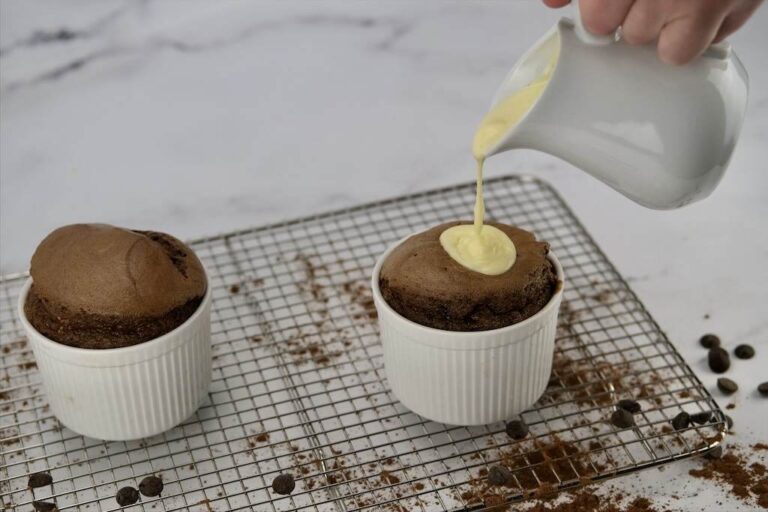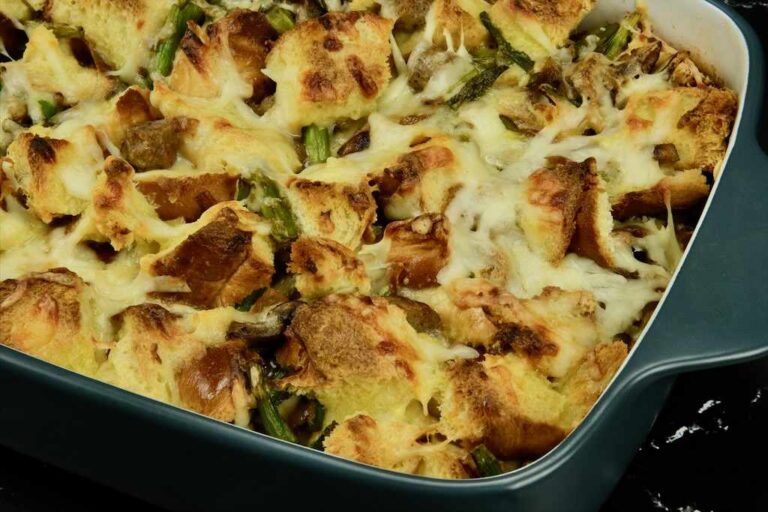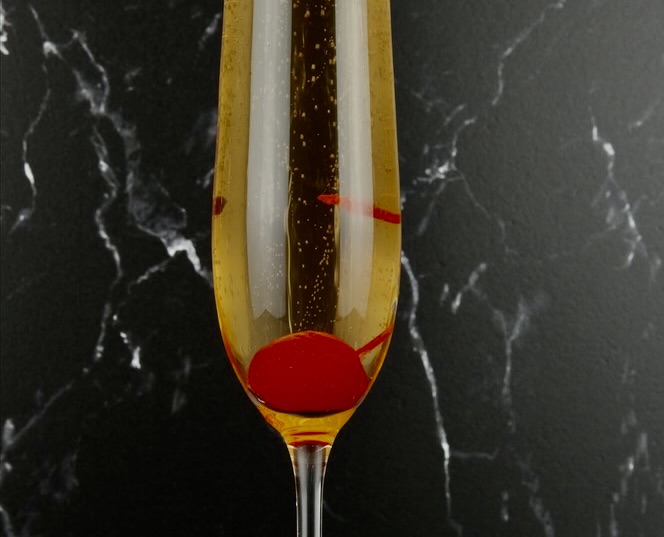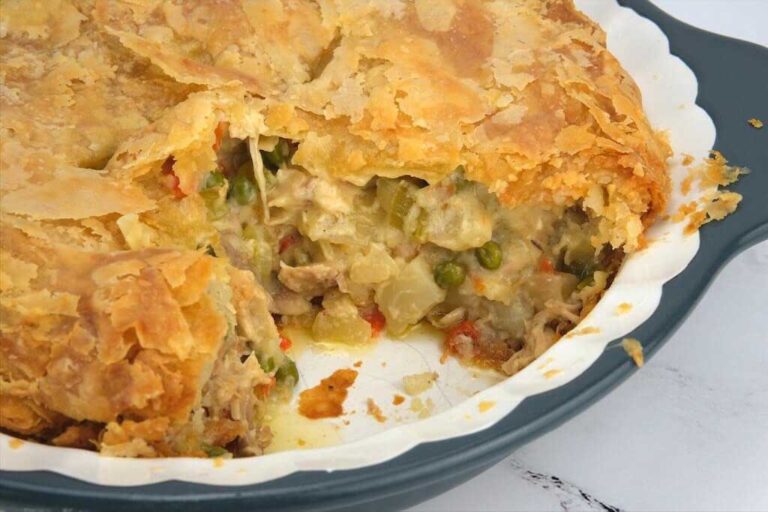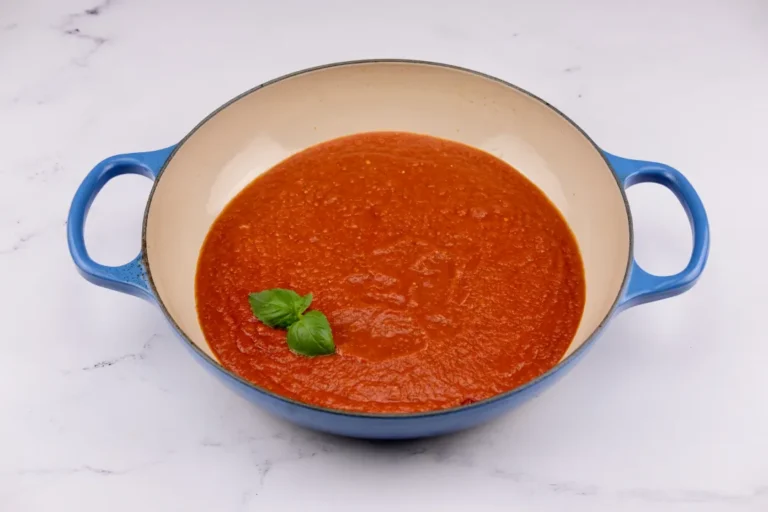Warm Asparagus with Morel Mushrooms and a Poached Egg
About this Recipe
By: Rachel
As fresh asparagus is a sure sign of spring, so are morel mushrooms—earthy and delicate, they are one of the most sought-after varieties of wild mushroom, and are notoriously difficult to cultivate.
Foragers hunt for these treasures under decaying trees, and in areas where forest fires have occurred (if you plan to forage, beware of the poisonous false morels). Morel mushrooms can be purchased at local farmers markets, and at specialty markets in the springtime.
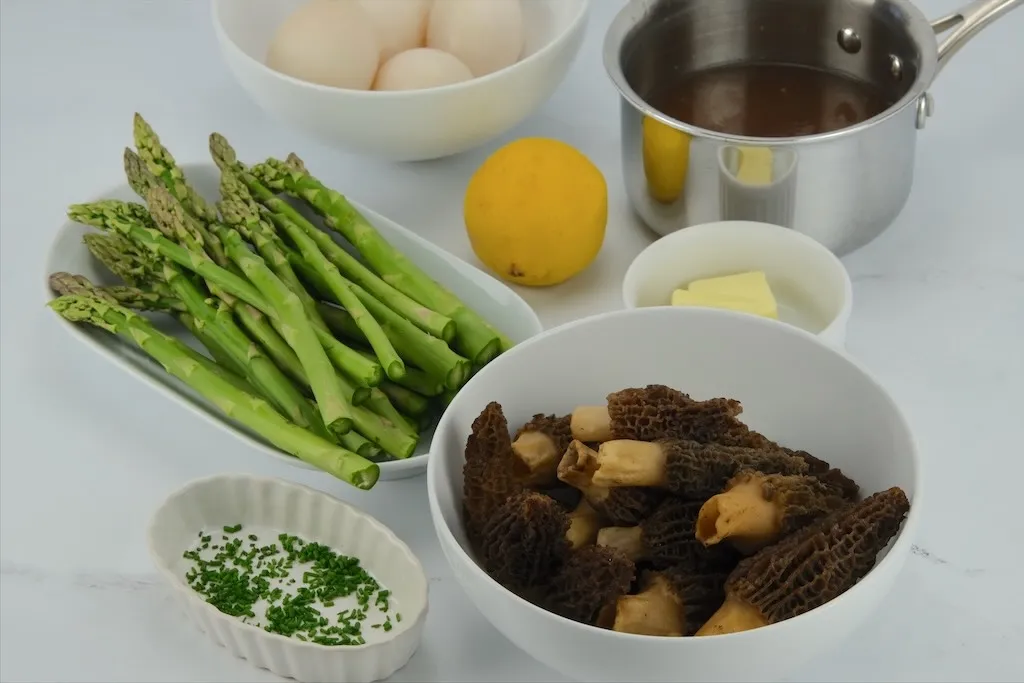
If you use the best ingredients available, this dish is deceptively rich and satisfying. The freshest asparagus is a perfect pair with the delicately-flavored mushrooms, but the cherry on the top is the perfectly poached egg. Use duck eggs, or pasture-raised chicken eggs, for the best result.
Duck eggs are about 50% larger than chicken eggs, but its yolk is twice as large. They have a thicker shell, too, so you’ll need to apply a little more force to crack them open. I like to say that duck eggs are to chicken eggs as heavy cream is to milk: richer and more luscious. If you can find them, they are worth using in this recipe. I generally find duck eggs at Whole Foods, or at local co-ops.
If you can’t find duck eggs, pastured chicken eggs are a great alternative. I was surprised to learn that for eggs to be certified as “free-range,” the chicken must be guaranteed a mere two feet to itself, while pasture-raised requires a minimum of 108 feet.
That extra space to explore means that the chickens have a greater chance of enhancing their diet with a variety of bugs and plants, equating to a dark, flavorful, rich yolk. Eggs should ideally have yolks that are dark orange in color, rather than pale yellow. The taste is incomparable.
Warm Asparagus with Morel Mushrooms and a Poached Egg
Ingredients
- 1 ½ cups (100g) fresh morel mushrooms, ends trimmed
- 1 bunch fresh asparagus, tough ends trimmed
- 2 tablespoons (30g) unsalted butter
- Kosher salt
- ¾ cup (175mL) homemade chicken or vegetable stock, or other high-quality stock
- 4 fresh duck or pastured chicken eggs
- Zest of one lemon
- Fresh chives, chopped, for garnish
Step by Step Instructions
Step 1
- Although most mushrooms should not be soaked, morels are the exception. They have a unique, honeycomb-like interior that traps bugs, soil, and grit, so they must be washed in several waters in order to be fully cleaned.
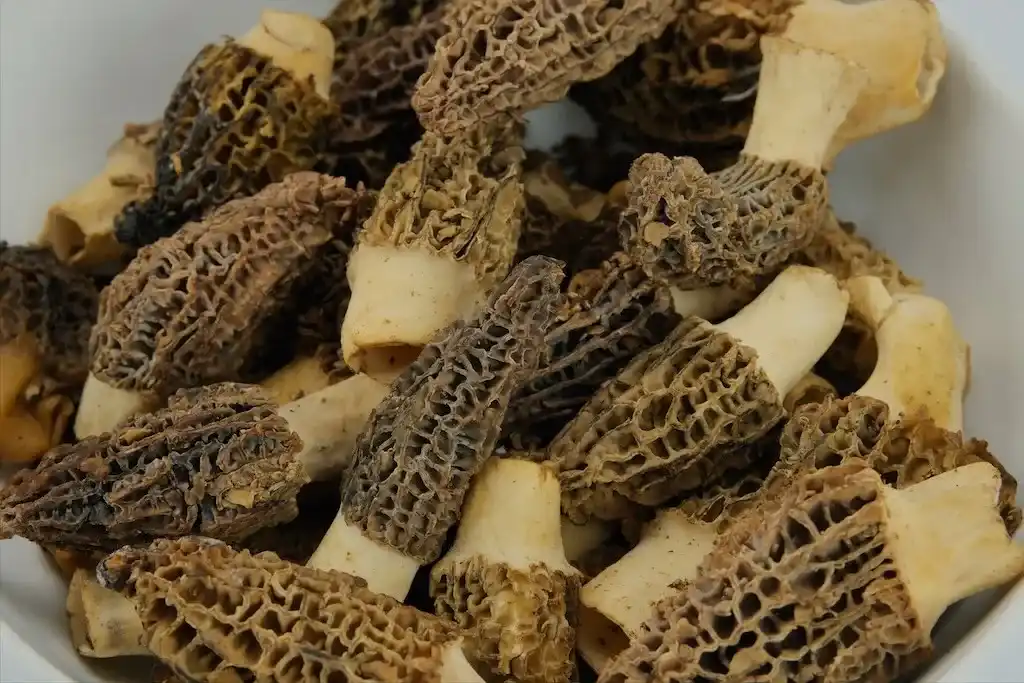
- Prepare the mushrooms by trimming the ends and repeatedly soaking and rinsing them in salted water until the water runs clear. Set aside to drain on a clean tea towel or paper towel.
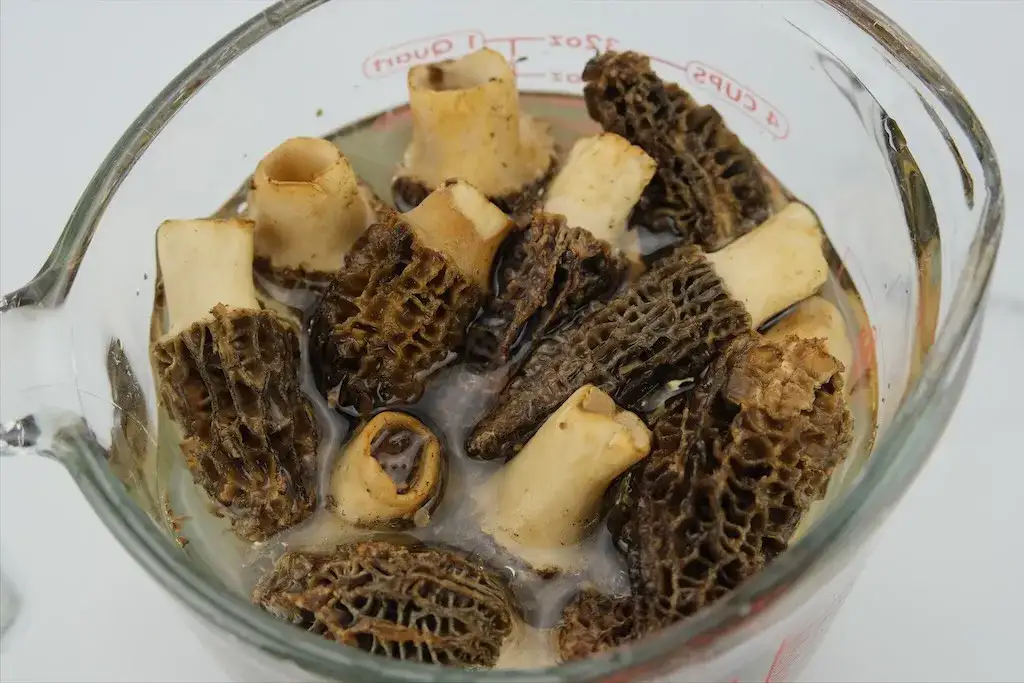
Step 2
- Blanch the asparagus by adding a little water (about a ½ cup) to a skillet with the asparagus and cover. Cook for about 3 minutes, or until the asparagus is bright green but still crisp. Drain, and immediately plunge the asparagus into ice water for one minute to stop the cooking.Wrap the cooked asparagus in a dry, clean kitchen towel, and set aside.
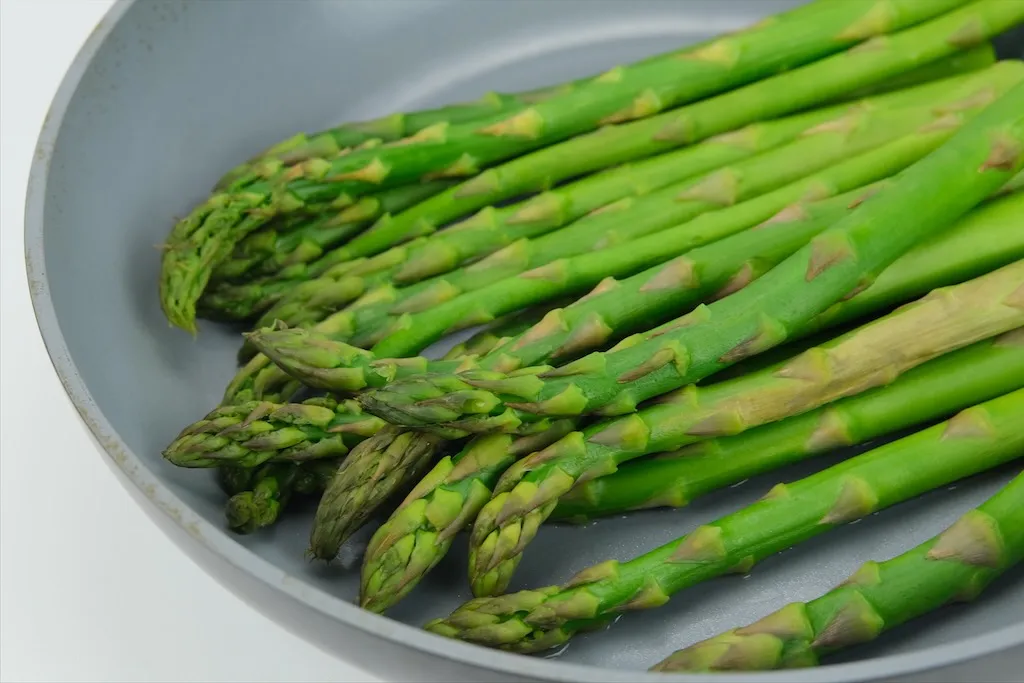
Step 3
- In a large skillet, heat the butter over medium heat until melted. Add the morels, and stir to coat. Season with salt (use a lighter or heavier hand depending on how salty your stock is), and cook morels gently for 5-6 minutes, stirring occasionally. Add the stock to the pan, and simmer gently while you cook the eggs.
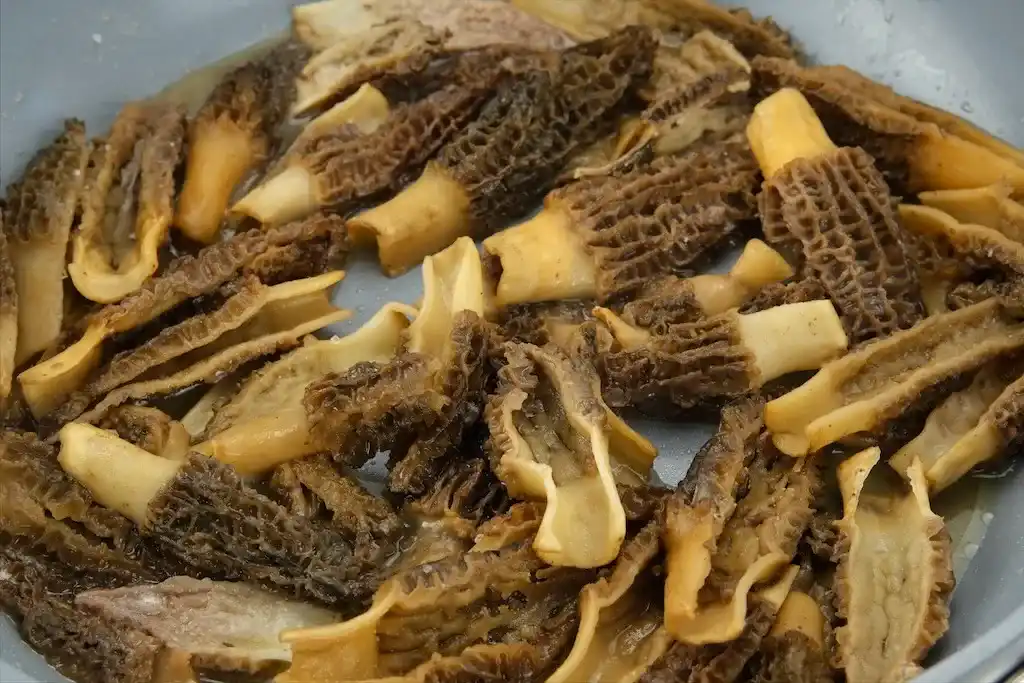
- Prepare four shallow serving bowls on your counter, so that they will be ready as soon as your eggs are. Divide the mushrooms, stock, and asparagus evenly between the dishes.
Step 4
- To make poached eggs, boil water in a small saucepan. Crack the eggs, two at a time, into a small ramekin, and set next to your stove.Once the water is boiling, stir the water rapidly in one direction using a wooden spoon, creating a “tornado” effect.Slide the eggs, two at a time, gently into the water, and immediately turn the heat down so the water simmers. Remove the eggs with a slotted spoon after 2-3 minutes. A perfectly-poached egg has a firm white and a runny yolk, and will jiggle slightly when prodded.
Step 5
- Top the asparagus with a poached egg. Finish with lemon zest and fresh chives, and serve immediately.
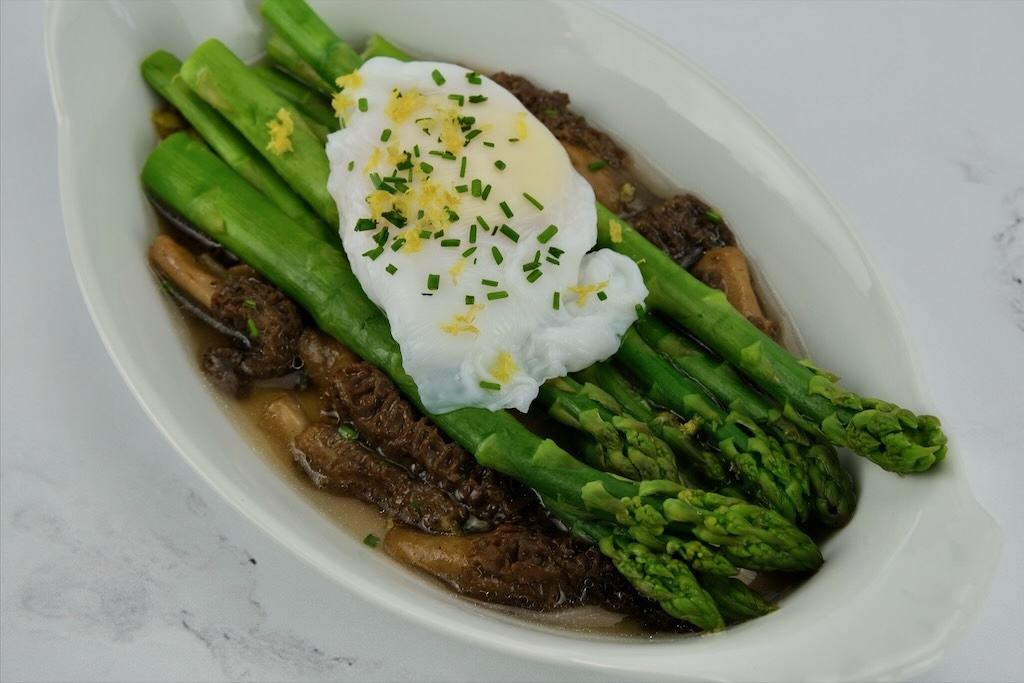
Beverage Pairing
By: Olivia
This dish is fresh with an earthiness and richness. It will be well-paired with a bright, rich white wine. Bolder Northern Rhône white blends of Marsanne and Roussanne are a perfect complement. The white wines from the region are rich with soft acidity and notes of pear and fresh herbs. Like the dish, a glass of white wine from this region expresses the very best of springtime!

